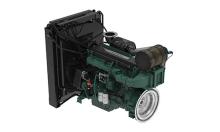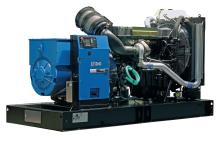
The 16litre TWD1645GE has been designed to produce up to 10% more power compared to previous models, and its switchable rpm settings mean that it can be used anywhere in the world.
“This is an exciting move for us to be launching the highest power density engine in its class,” says Giorgio Paris, head of Volvo Penta’s industrial segment.
“We are setting a new standard in power generation with our market-leading offer. The engine comes equipped with our latest features.”
Market-leading power density
The TWD1645GE produces up to 800kVA at 1,800rpm (60 Hz), and up to 770kVA at 1,500rpm (50 Hz.). Its sister model, the TWD1644GE produces up to 752kVA at 1,800rpm, and up to 717kVA at 1,500rpm. Both are calculated with 94% generator efficiency.
“We have achieved this level of market-leading power density by advancing our technology and adding new features,” says Krikor Abraham, Volvo Penta’s product manager for the power generation segment.
“We are able to leverage more power out of the engines, and customers will see a range of benefits.”
The new 16litre engines feature dual stage turbo-chargers and new high grade steel pistons for excellent power density; optimised combustion with electronic high-pressure unit injectors, resulting in high fuel efficiency and low exhaust emission levels; upgraded wiring harness, for optimum insulation in harsh environments; two-circuit cooling package, and an advanced engine control system.
The engine can be used for prime power, in locations such as construction sites where there is no electricity grid supply, and as stand-by power, for sites such as hospitals which require back-up electricity supply in the event of normal power failure.
As the engines are equivalent to EU Stage II levels, exhaust emissions are minimised, for better environmental care.
“These new models’ excellent power-to-size ratio means that they are compact, flexible, have good load acceptance, and can be used in all types of applications,” says Abraham.
“Customers can power their businesses with our new power output, and our global footprint means that we can supply the same engine to anywhere in the world with the same service support and aftermarket care.”










